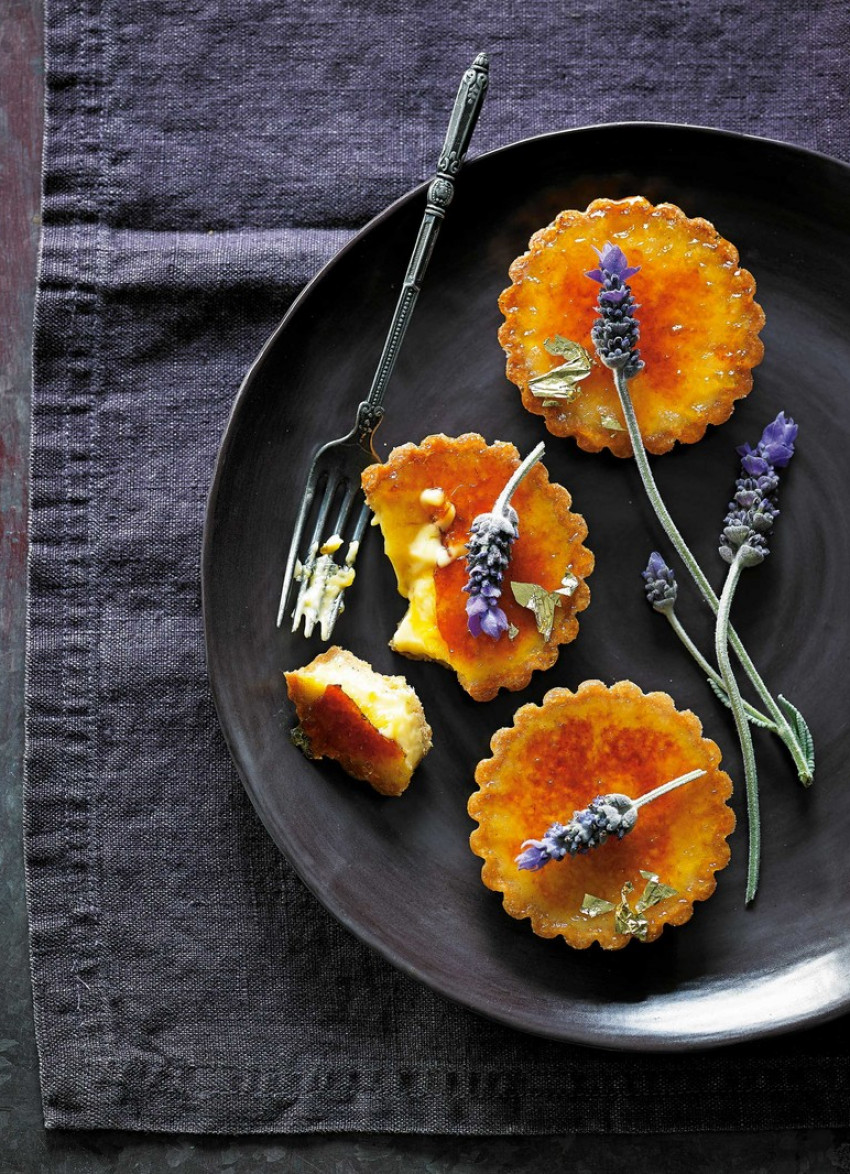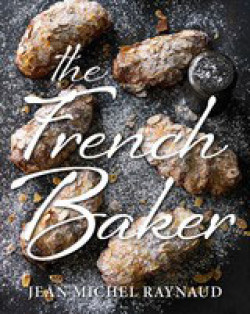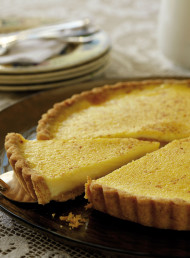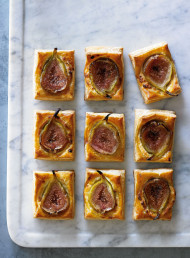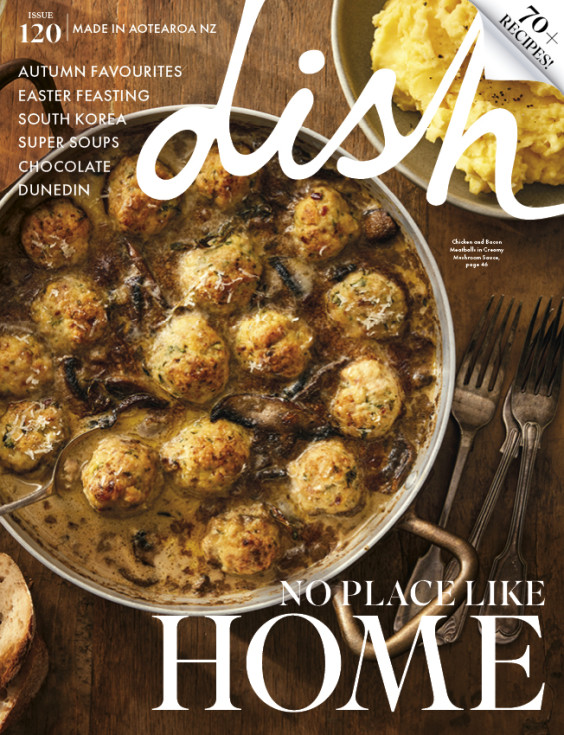Lavender Crème Brûlée Tarts
A recipe for delicately floral curd tarts taken from Australian patissier Jean Michel Raynaud's cookbook 'The French Baker'.
INGREDIENTS
8 egg yolks
200 grams caster (superfine) sugar
250 ml full-cream milk
250 ml whipping cream (35% fat)
2 vanilla beans, halved lengthways, seeds scraped
900 grams Pâte Sablée (shortbread pastry) recipe here
lavender essence, to taste
Baked custards in one form or another have existed for hundreds of years, especially around the regions of Spain and Portugal, long before the first documented recipe for crème brûlée in the seventeenth century. A custard is made with a thickener, such as flour or cornflour, while a crème brûlée is more akin to a curd, where the thickness and texture is created by the coagulation of the eggs. This is why it requires a little more care during the baking process — you don’t want your brûlée mix turning into an omelette! To do this tart justice, you really need a domestic blowtorch to achieve a crunchy and evenly caramelised top. A grill will tend to melt the sugar unevenly and burn the pastry.
METHOD
Put the egg yolks in a heatproof bowl, add half the sugar and whisk until well combined. Make sure you start whisking as soon as you pour the sugar into the egg yolks, to avoid ‘burning’ the eggs.
Put the milk, cream and vanilla beans and seeds in a saucepan and bring to the boil. Remove the pan from the heat and, whisking continuously, gradually pour the hot cream onto the egg mixture. Strain the custard mixture through a fine sieve into a jug. Set aside to cool, then return the vanilla beans to the mixture and refrigerate for 2 hours.
You will need twelve 7.5 cm (3 in) diameter tartlet tins or a 25 cm (10 in) tart ring or tart tin with a removable base. Roll out the pastry on a lightly floured work surface until 4 mm (1/8 in) thick, dusting with a little extra flour if necessary to stop the dough from sticking. Using a 12 cm (41/2 in) round cutter, cut the pastry into twelve rounds. Line the base and side of the tins with the pastry, then refrigerate for 30 minutes.
Preheat the oven to 180°C (350°F). Line each pastry shell with foil, making sure the side of the shell is covered, then fill to the top with uncooked rice or baking beads. Blind bake for 20 minutes, or until the base is golden (the cooking time is the same for both the small tarts and the single tart). Remove the rice and foil, then set the tart shells aside until cool. Reduce the oven temperature to 90°C (195°F).
Remove the custard mixture from the fridge, remove and discard the vanilla beans, then add a few drops of lavender essence, to taste. Be careful not to overdo it; essences are very concentrated and can quickly overpower other flavours.
To avoid spillage, place the tart shells on a baking tray and place in the preheated oven. Pour in the custard filling, being careful you don’t overfill the shells or the filling will run over the side and the pastry will become soggy underneath. Bake for 30–40 minutes, or until the filling just wobbles when the tart is gently shaken. Set aside to cool to room temperature, then refrigerate for 3 hours. Remove from the fridge 15 minutes before serving and sprinkle the remaining sugar evenly over the tarts, including the pastry crust. Using a domestic blowtorch, brown the tops until caramelised. Makes 12
Keep up to date with
dish weekly recipes,
food news, and events.
latest issue:
Issue #120
As the days become shorter, and the nights cooler, the latest issue is perfectly timed to deliver delicious autumn dishes. From recipes using fresh seasonal produce such as feijoas and apples, to spectacular soothing soups and super-quick after-work meals in our Food Fast section, we’ve got you covered. With Easter on the horizon, we feature recipes that will see you through breakfast, lunch and dinner over a leisurely weekend holiday, and whip up chocolatey baking treats sure to please. We round up delicious dinners for two and showcase a hot new Korean cookbook before heading south to Dunedin to check out all that’s new in food and dining.The latest issue of dish is on sale NOW at all good bookstores and supermarkets – don’t miss it!

